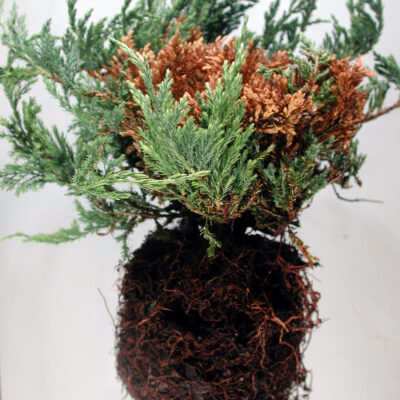3 Signs Of Overwatering in the Landscape

Water is the lifeblood of plants. After all, they are 90% water. Without water, plants can’t produce food. Their leaves and stems wilt, and the entire plant will eventually die. But there is such a thing as too much of a good thing.
Using more water than the soil can absorb or the plant can use is known as overwatering. Overwatering the landscape is a common problem – especially if your property has an automatic irrigation system. Sometimes in an effort to do the right thing, we actually go overboard and put too much water on the lawns and landscape beds. Not sure if your landscape has too much water? We’ve compiled three simple signs of overwatering to look for on your commercial property.
1. Something Just Doesn’t Look Right
You can’t put your finger on it, but the landscaping looks…off. Standing water in bed edges or lawns and swampy or squishy spots in the landscape are sure signs that there is too much water in the soil. But sometimes, there are other, less obvious symptoms to look for. Many times, when the landscaping doesn’t look its best, it’s often the result of something we don’t see right away.
Signs of overwatering and underwatering look very similar – discolored leaves, stunted growth, and overall lack of vigor. The only difference is in the soil. When plants are in dry soil, they wilt due to a lack of water. Plants that are sitting in water also sag or wilt in the same way because they are full to the point their cells actually burst.


2. Overwatering = Fungus
When decaying organic matter mixes with consistently high moisture levels, you get fungus growth. Whether it is in the form of mold, mushrooms, or slime – their origin is the same. Too much water!
If you are seeing mold in the mulched areas or rings of webbing on the turf – those are definite signs that the landscape is too wet. And if your lawns and landscape beds have suddenly turned into mushroom farms…well, that’s a no-brainer.
3. Water-Loving Weeds are Thriving
There are a whole host of ornamental plants that thrive in moist soils. But there are an equal number of undesirable plants that love water too. As you are walking your landscape, a sure sign of overwatering is the appearance of Nut Sedge, Moss, or Violets, to name a few.
Excessively moist soil is an optimum condition for these types of plants to go wild. And once they take hold, they can be challenging to get rid of. A good first step is to reduce the amount of supplemental water and make sure there is adequate drainage in these areas.

How to Reverse the Signs of Overwatering
Plants showing signs of overwatering can easily be fixed if the excess water is discovered early. It could be as easy as an irrigation system check to find breaks, leaks, or programming issues. Or it could be an underlying drainage issue that has gone undetected. No matter what the water problem is, it’s usually pretty easy to solve.
- Is your irrigation system running when it doesn’t need to be? Time to call in the pros. Power outages can cause programmed systems to get off cycle. Irrigation systems may also run at odd times as a result of a faulty or missing rain sensor. Best to have it checked by a pro.
- It hasn’t rained in days, but there is still standing water. If you have an irrigation system, there could be a broken pipe below the ground causing the water to run constantly. No irrigation system – time to look at the drainage and see how to redirect the water.
- If you only see signs of standing water or excess moisture following a storm – that could be perfectly harmless. Simply letting the planting areas dry out is all it takes to prevent long-term damage. Post-storm water will disappear in due time.
- You could just need to have your irrigation system times reduced. Irrigation systems that do not use smart water technology could be running too often or for too long for the landscaping you have.
- Soil moisture sensors prevent irrigation systems from operating when the soil is adequately wet. Properties that have soil that is slow to drain can benefit from adding these sensors to an existing irrigation system. A study conducted by the University of Florida showed soil moisture sensors saved 56% more water than rain sensors alone.









